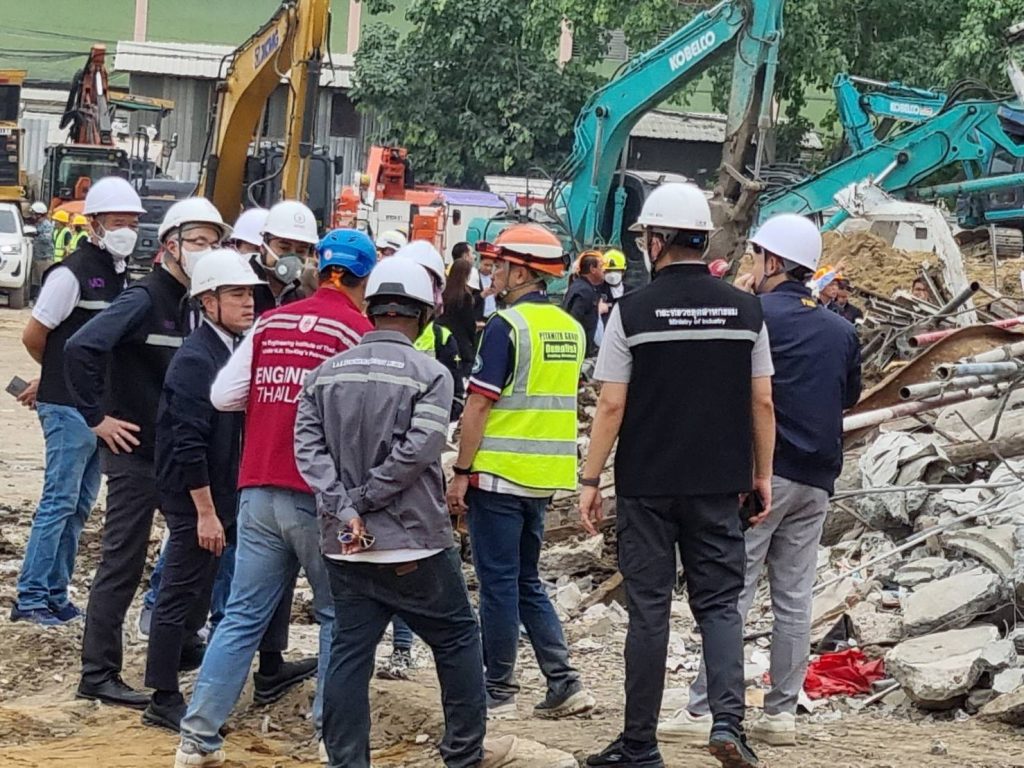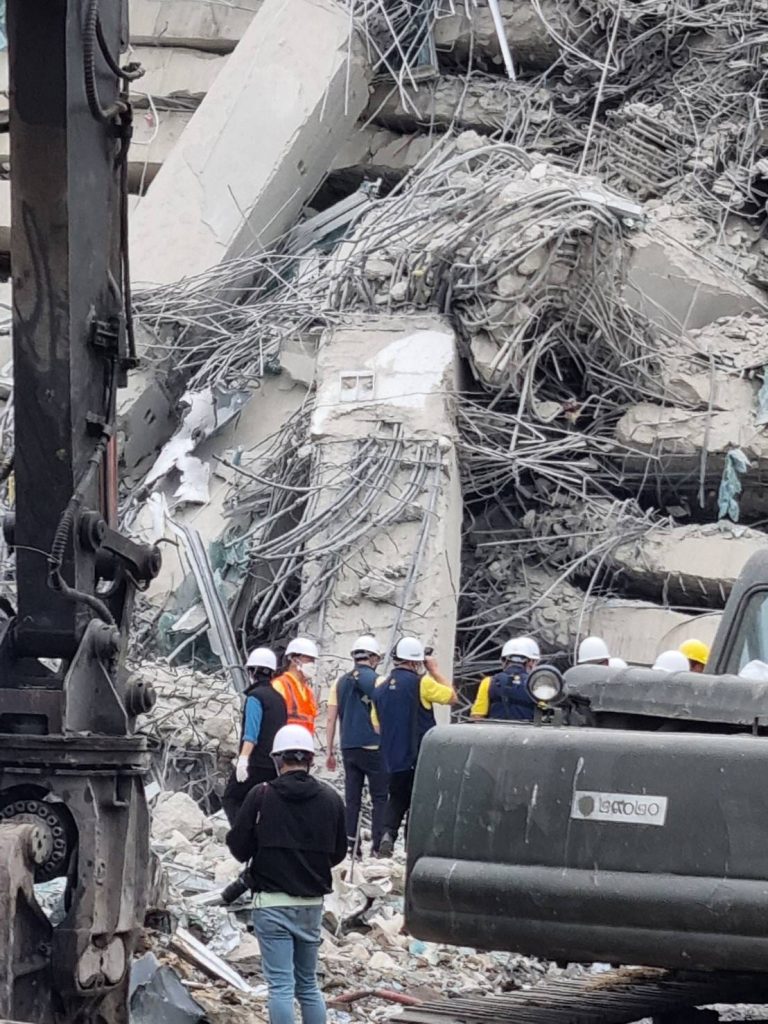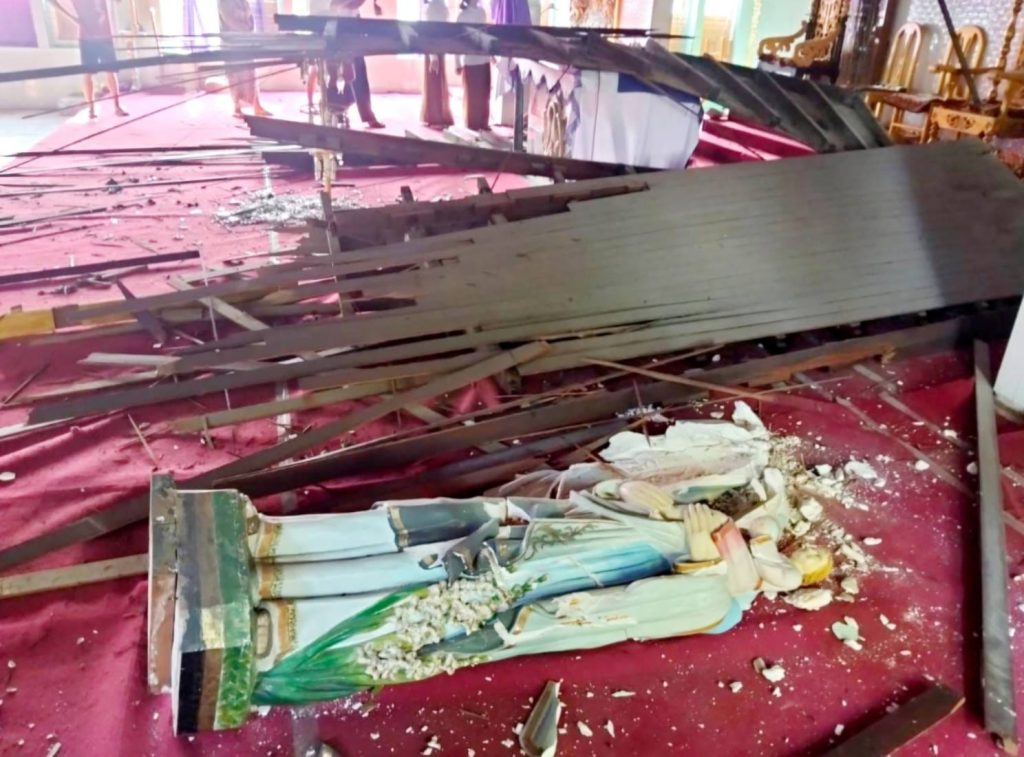Two days after a 7.7-magnitude earthquake struck central Myanmar, rescue teams and desperate residents continue to sift through the rubble in search of survivors.
The quake, the strongest recorded in the country in a century, has claimed more than 1,600 lives as of Sunday, with hundreds — possibly thousands — still missing.
In Mandalay, Myanmar’s second-largest city and the hardest-hit area, powerful aftershocks have rattled already weakened buildings, complicating rescue efforts. The U.S. Geological Survey (USGS) recorded at least 15 aftershocks within a 10-hour period on Friday.
Tremors were felt as far as Bangkok, Thailand — more than 1,000 kilometers away — where over 700 buildings sustained minor damage. The Bangkok Metropolitan Authority reported 17 deaths, 32 injuries, and 83 people still missing.

Many of those unaccounted for are believed to be trapped beneath a collapsed 30-story construction site in the city’s Chatuchak area. Search and rescue efforts are ongoing.
In Myanmar, the Catholic Bishops’ Conference of Myanmar (CBCM) issued an urgent appeal on March 29 for a ceasefire. The bishops called on all parties involved in the country’s ongoing conflict to allow rescue teams safe passage and to ensure the unhindered delivery of humanitarian aid.
The military junta, which seized power in a 2021 coup, made a rare appeal for international assistance. However, aid agencies have warned of major logistical obstacles.
Key roads have been damaged, power and communications remain unstable, and several airports are closed — all of which are hampering relief operations.
Despite the junta’s appeal, local reports indicate that airstrikes have continued in some conflict areas. This has raised concerns that humanitarian access may be blocked in parts of the country.
In contrast, pro-democracy armed groups declared a unilateral two-week ceasefire, effective Sunday, to support earthquake relief efforts.
The shadow National Unity Government called on international organizations to increase aid and humanitarian support.
Several neighboring countries — including India, China, Thailand, Malaysia, Singapore, and Russia — have deployed rescue teams and sent emergency supplies. Warships and aircraft carrying food, water, and medical aid have begun arriving in Myanmar.
Doctors Without Borders: ‘We need access, and time is critical’
Doctors Without Borders (MSF) said its teams in Myanmar and neighboring countries are prepared to respond but stressed that access remains a major hurdle.

“The priority for us at the moment is to deploy assessment teams, and ideally, an emergency trauma care team,” said Federica Franco, MSF’s Head of Mission in Myanmar. “To do so, however, we need access, and time is particularly critical in situations like these, especially for those who need immediate care.”
Franco said damage assessments are difficult due to communication blackouts and road closures in some of the hardest-hit areas.
“We had a team on the road earlier today, but they had to come back,” she said. “This is making it incredibly challenging, not just to get information, but also to reach people urgently in need of help.”
She added that MSF is willing to coordinate with all actors to facilitate a humanitarian response.
“Doctors Without Borders has made it very clear that we are willing to engage with all stakeholders to make this happen,” she said.
Local church leaders and volunteers mobilize
Among those responding to the disaster is Fr. Girish Santiago, SJ, regional superior of the Jesuits in Myanmar. He is en route to assess the damage in Taungoo City, where widespread destruction has been reported.
The city is home to Fr. Justin MYN, SJ, who was involved in rescue operations during last year’s Yagi floods. Sacred Heart Cathedral — where Fr. Justin was ordained earlier this year — sustained severe damage.
In Mandalay, Naypyidaw, and other affected cities, volunteer groups are digging through debris with their bare hands.

With too few trained rescue teams and limited equipment, many families are searching for their missing loved ones on their own.
The humanitarian situation is worsening. An estimated 15 million people — nearly one-third of Myanmar’s population — are facing acute shortages of food and water.
Aid agencies have warned that it could take days or even weeks to fully assess the extent of the damage.
As Myanmar confronts this unprecedented disaster, humanitarian groups are urging the international community to ensure that aid reaches those most in need — before it is too late.









